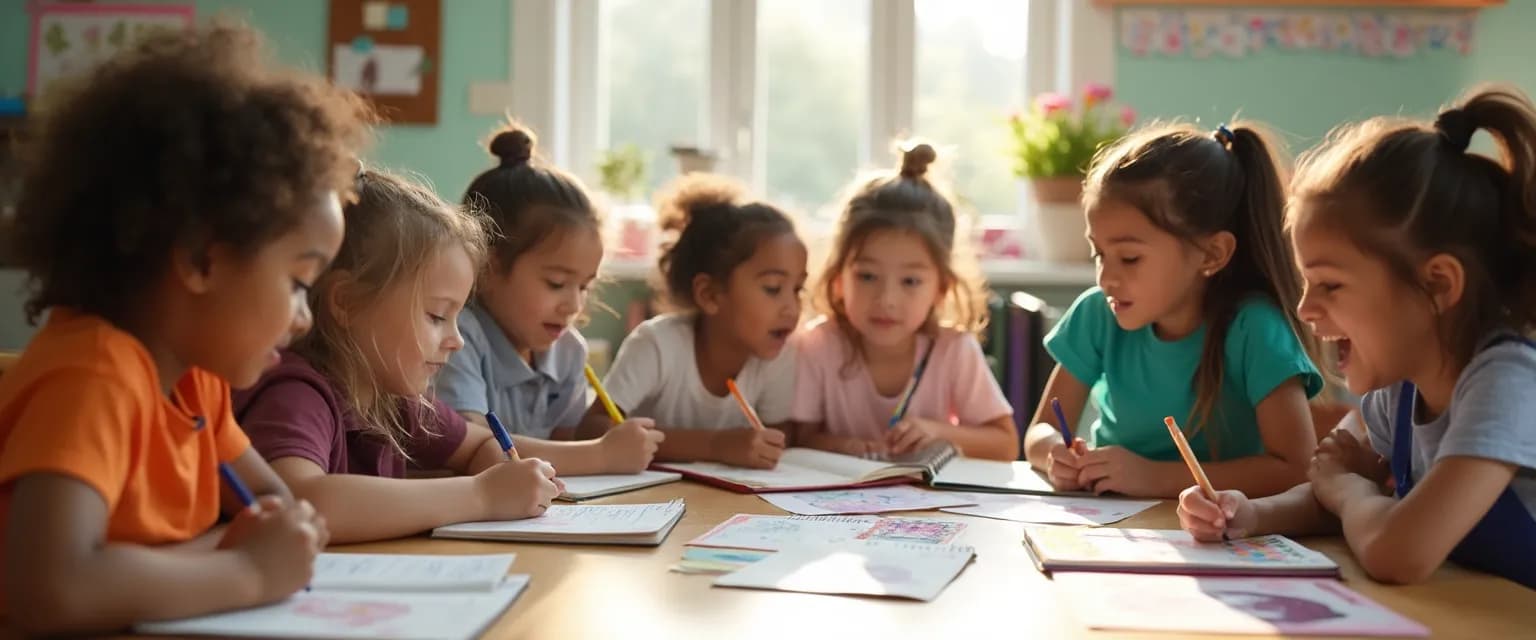7 Effective Classroom Activities for Teaching Self-Awareness to Students
Ever wondered why some students thrive in self-understanding while others struggle? Teaching self awareness to students creates a foundation for both academic success and emotional well-being. When children recognize their emotions, strengths, and growth areas, they develop essential skills that serve them throughout life. These classroom activities don't just improve student self-perception—they transform how young minds engage with learning and relationships.
The science behind teaching self awareness to students is compelling. Research shows that self-aware children demonstrate better impulse control, stronger decision-making abilities, and improved anxiety management skills. By implementing these seven carefully selected activities, teachers create opportunities for students to develop metacognitive skills—thinking about their own thinking—which strengthens neural pathways associated with emotional regulation.
From kindergarten through high school, these accessible exercises integrate seamlessly into existing classroom routines. The beauty of teaching self awareness to students lies in its simplicity: small, consistent practices yield remarkable results. Let's explore activities that transform how students understand themselves and interact with others.
Essential Classroom Activities for Teaching Self-Awareness to Students
When it comes to teaching self awareness to students effectively, these seven research-backed activities provide immediate implementation options for any classroom:
1. Emotion Check-In Circles
Start the day with a quick emotion check-in using visual aids like emotion charts or cards. Students identify and share their current feelings, building emotional vocabulary and recognition. For younger students, use simple faces; for older students, introduce nuanced emotion words. This foundational practice in teaching self awareness to students takes just 3-5 minutes but establishes emotional intelligence as a classroom priority.
2. Strength-Spotting Partners
Pair students weekly to observe and document each other's strengths. This activity helps students recognize positive qualities in themselves and others. Elementary students might focus on simple observations ("You're good at helping others"), while middle and high schoolers can identify character strengths like perseverance or creativity. This builds social confidence while enhancing self-perception.
3. Mindful Moments
Incorporate 1-2 minute mindfulness breaks during transitions. Students pause to notice their breathing, physical sensations, and current thoughts without judgment. These brief moments help students connect with their internal states, a crucial component of teaching self awareness to students across all age groups.
4. Personal Goal Trackers
Create simple visual systems for students to set and monitor weekly goals. Even kindergarteners can draw pictures of skills they're working on, while older students can develop more sophisticated tracking systems. This practice builds metacognition and helps students identify patterns in their learning and behavior.
5. "My Weather Report" Check-Ins
Students describe their internal state using weather metaphors: "I'm feeling sunny with some clouds" or "There's a storm brewing inside me." This provides accessible language for expressing complex emotional states and becomes a powerful tool for teaching self awareness to students who struggle with emotional vocabulary.
6. Reflection Corners
Designate a classroom space where students can voluntarily go to process emotions or reflect on challenges. Stock it with simple prompts and fidget tools to support transforming restless energy into calm. This physical space reinforces that self-reflection is valued and important.
7. Strength and Growth Circles
During weekly class meetings, students share one strength they demonstrated and one area where they're growing. This normalizes both celebration and development as part of the learning process.
Integrating Self-Awareness Teaching into Your Daily Classroom Routine
Successful implementation of teaching self awareness to students doesn't require overhauling your entire curriculum. Instead, weave these activities into existing routines:
- Use transition times for quick check-ins or mindful moments
- Incorporate strength-spotting into partner work
- Connect goal-setting to subject-specific learning targets
- Make self-awareness language part of your classroom culture
Creating an environment that supports teaching self awareness to students means modeling these practices yourself. When teachers demonstrate self-reflection and emotional awareness, students internalize these behaviors more readily. Consider sharing appropriate examples of your own growth mindset and emotional regulation strategies.
Measure progress through observation rather than formal assessment. Look for students using emotional vocabulary unprompted, seeking reflection time independently, or applying strength awareness to overcome challenges. These behavioral indicators reveal the impact of your self-awareness curriculum more authentically than traditional testing.
Remember that teaching self awareness to students is an ongoing process, not a one-time lesson. The most effective classrooms integrate these practices consistently throughout the year, building a foundation of self-understanding that supports all learning. By implementing these seven activities, you're equipping students with essential skills that extend far beyond academic achievement—you're helping them develop the emotional intelligence they'll need for lifelong success.




